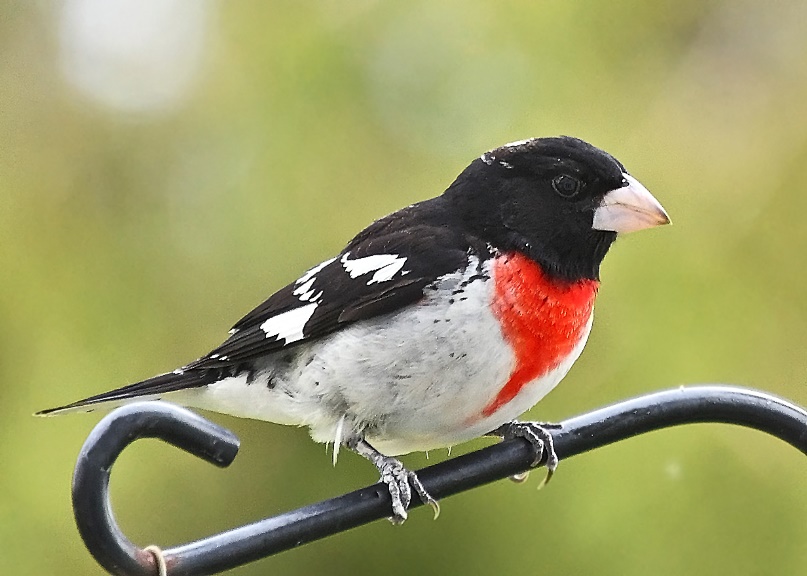
Rural Perspectives: The rose-breasted grosbeak returns here each May
by Diane Constable

This relative of the cardinal, the rose-breasted grosbeak (Pheucticus ludovicianus) returns to our area each spring, around May, after wintering in Central America and the northern part of South America.
Only the male has the eye-catching black, white, and rose-colored markings. The female and young look quite different and are shades of brown and beige. They all have the large pinkish bill, which comes in handy when eating various seeds, fruits, and insects, including potato beetles and large grasshoppers.
Although a shy bird, it readily comes to bird feeders for sunflower and safflower seeds and peanuts. The rose-breasted grosbeak’s song is often described as similar to a drunken, happy robin, yet more melodic.
Both male and female build the nest, feed, and protect their young from predators until the chicks are on their own. They prefer to nest in edges of woodlands and fields and will build their nest in forks of young trees. The nest can be so flimsy you can see the outline of the eggs from underneath. The grosbeak lays up to five pale-blue to green eggs with red speckles that will hatch in about 14 days.
The chicks stay in the nest about 14 more days before they leave. Like many fledgling songbirds, they will live on the ground and under cover for about a week under the watchful eyes of their parents while they hone their flying skills. They will live up to 12 years.
Fun Facts:
- During migration, the rose-breasted grosbeak crosses the Gulf of Mexico at night without stopping—a 500-mile flight.
- Rose-breasted grosbeaks often sing softly during the night.
 As an avid photographer, Diane Constable regularly puts her formal education in both nature and photography to good use. Diane also enjoys gardening and her dogs and serves on the board of the Ann Arbor Dog Training Club.
As an avid photographer, Diane Constable regularly puts her formal education in both nature and photography to good use. Diane also enjoys gardening and her dogs and serves on the board of the Ann Arbor Dog Training Club.
One thought on “Rural Perspectives: The rose-breasted grosbeak returns here each May”
Comments are closed.




Hi we are in Collingwood, Ontario, Canada for the last 20 yrs and have never seen these guys until 3 days ago, feeders are filled with safflower seed and they seem to be vefy comfortable on them.
I read they bring meaning and are spiritual if you see one.